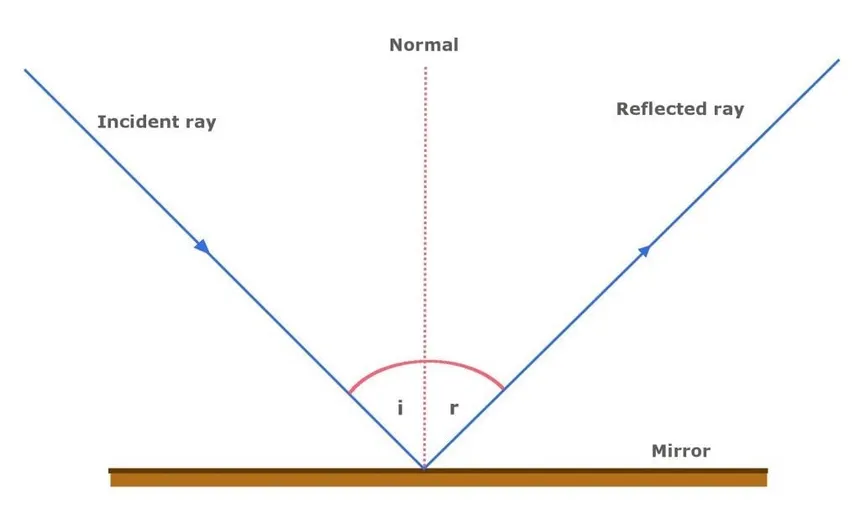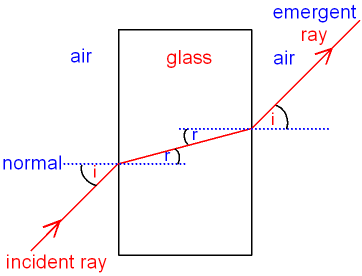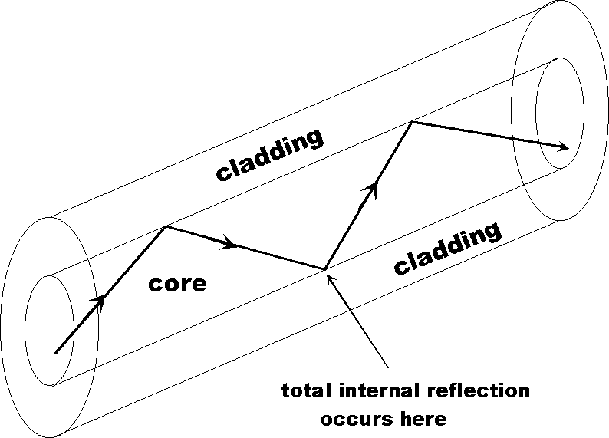(d) light and sound
1/14
Earn XP
Description and Tags
Name | Mastery | Learn | Test | Matching | Spaced |
|---|
No study sessions yet.
15 Terms
what sort of wave is a light wave (3.14)
transverse (vibrations occur perpendicular to the direction in which the wave moves)
law of reflection (3.15)
law of reflection: angle of incidence = angle of reflection

investigate the refraction of light using rectangular blocks, semi-circular blocks and triangular prisms (3.17)
place a block of glass on a piece of paper and draw its outline
remove the glass and draw the normal
draw a line at e.g. 30 degrees from the normal and replace the glass
shine a light along the line and draw a line where the light comes out of the other side (the emergent ray)
remove the glass and connect the two lines
measure the angle of the emergent ray (it should be 30 degrees)
repeat with other glass blocks

relationship between the refractive index, the angle of incidence and the angle of refraction (3.18)
refractive index = sin(angle of incidence) / sin(angle of refraction)
n = sin i / sin r
investigate the refractive index of glass using a glass block (3.19)
shine a light through a glass block at a certain angle, measuring the angle of incidence and refraction
calculate sin i / sin r to find the refractive index
role of total internal reflection in transmitting information along optical fibres and prisms (3.20)
total internal reflection: when a light ray hits a boundary between two materials of different densities and is reflected rather than refracted
there are two conditions for this to occur:
angle of incidence > critical angle
the light must be travelling from a denser medium to a less dense one
optical fibres:
consists of a core and cladding (the core being more dense than the cladding)
the light ray is shone through one end of the fibre and reflected in the core until it reaches the other side
used in endoscopes to allow surgeons to see inside their patients

critical angle c (3.21)
when the angle of refraction is equal to 90 degrees, the angle of incidence is called the ‘critical angle’. past the critical angle, the light will be reflected rather than refracted.
relationship between critical angle and refractive index (3.22)
sin(critical angle) = 1 / refractive index
sin c = 1 / n
what sort of wave is a light wave (3.23)
longitudinal (vibrations occur parallel to the direction in which the wave moves)
frequency range for human hearing (3.24P)
20 - 20,000 Hz
investigate the speed of sound in air (3.25P)
acquire a friend, something that makes a loud sound e.g. a starting pistol and a stopwatch
get your friend to stand a far distance e.g. 400m away from you with their stopwatch
raise your hand and put it down as soon as you fire the pistol with your friend starting their stopwatch as soon as they see your hand signal
your friend should stop their stopwatch when they hear the sound of the pistol
divide the distance (400m) by the time recorded on the stopwatch (should be just above 1 s) to find the speed of sound in air
although this experiment is a good way to visualise the difference between the speed of sound and light in air, it is not very accurate, mostly due to human error - your friend will probably start or stop the stopwatch a few milliseconds later than the actual signal or sound, so the results won’t be perfectly accurate
actual speed of sound: around 340 m/s
how an oscilloscope and microphone can be used to display a sound wave (3.26P)
the microphone should be plugged into the oscilloscope
the microphone will transfer the sound into an electrical signal which will be displayed on the oscilloscope
the x axis is the time base, the y axis is the voltage
investigate the frequency of a sound wave using an oscilloscope (3.27P)
make a sound into a microphone plugged into an oscilloscope
adjust the time division until you can see one entire wave cycle
read off the time period and calculate the frequency using f = 1 / T
how does the pitch of a sound relate to the frequency of vibration from the source (3.28P)
high frequency = high pitch
how does the loudness of a sound relate to the amplitude of a vibration of the source (3.29P)
greater amplitude = louder sound